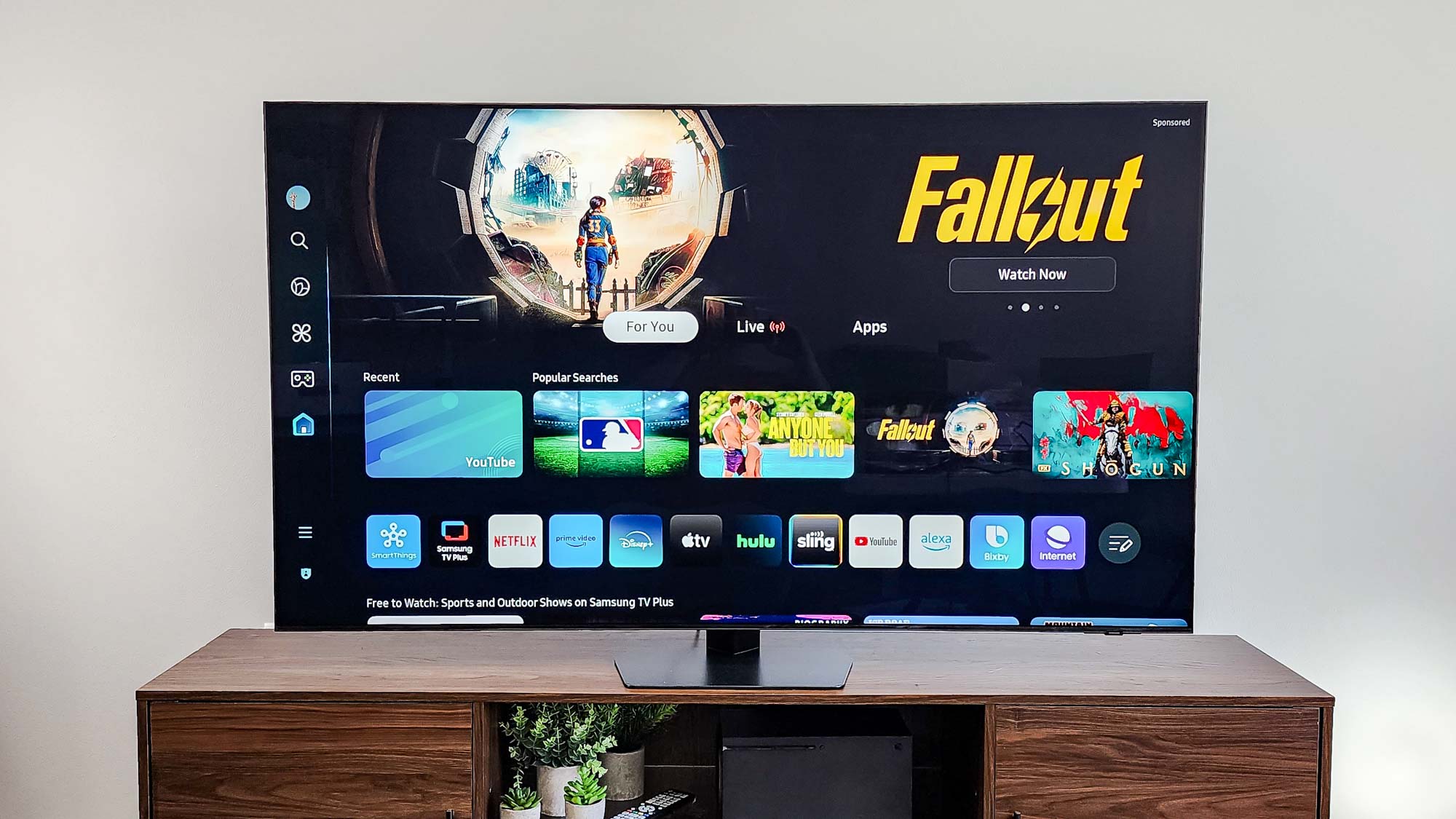TCL QM6K vs Hisense U6N: Which Mini-LED TV under $600 wins?
These entry-level Mini-LED TVs pack a ton of value
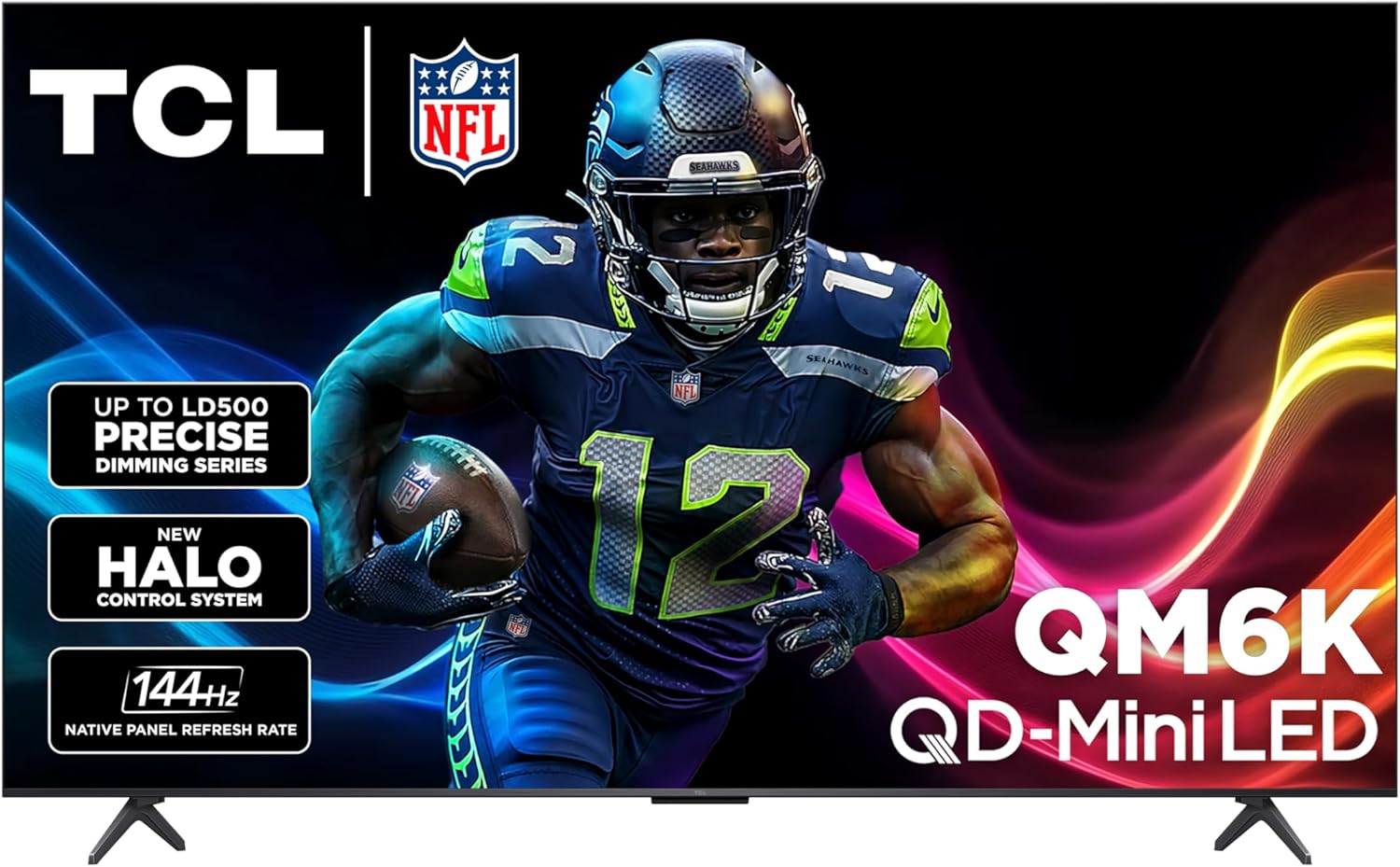
The TCL QM6K is a budget-friendly Mini-LED TV with solid picture quality and better gaming features than just about anything else in its class.
Pros
- Loaded with features
- Excellent picture quality
- Relatively sleek design for the price point
Cons
- Sound performance is inconsistent
- Glare reduction could be better
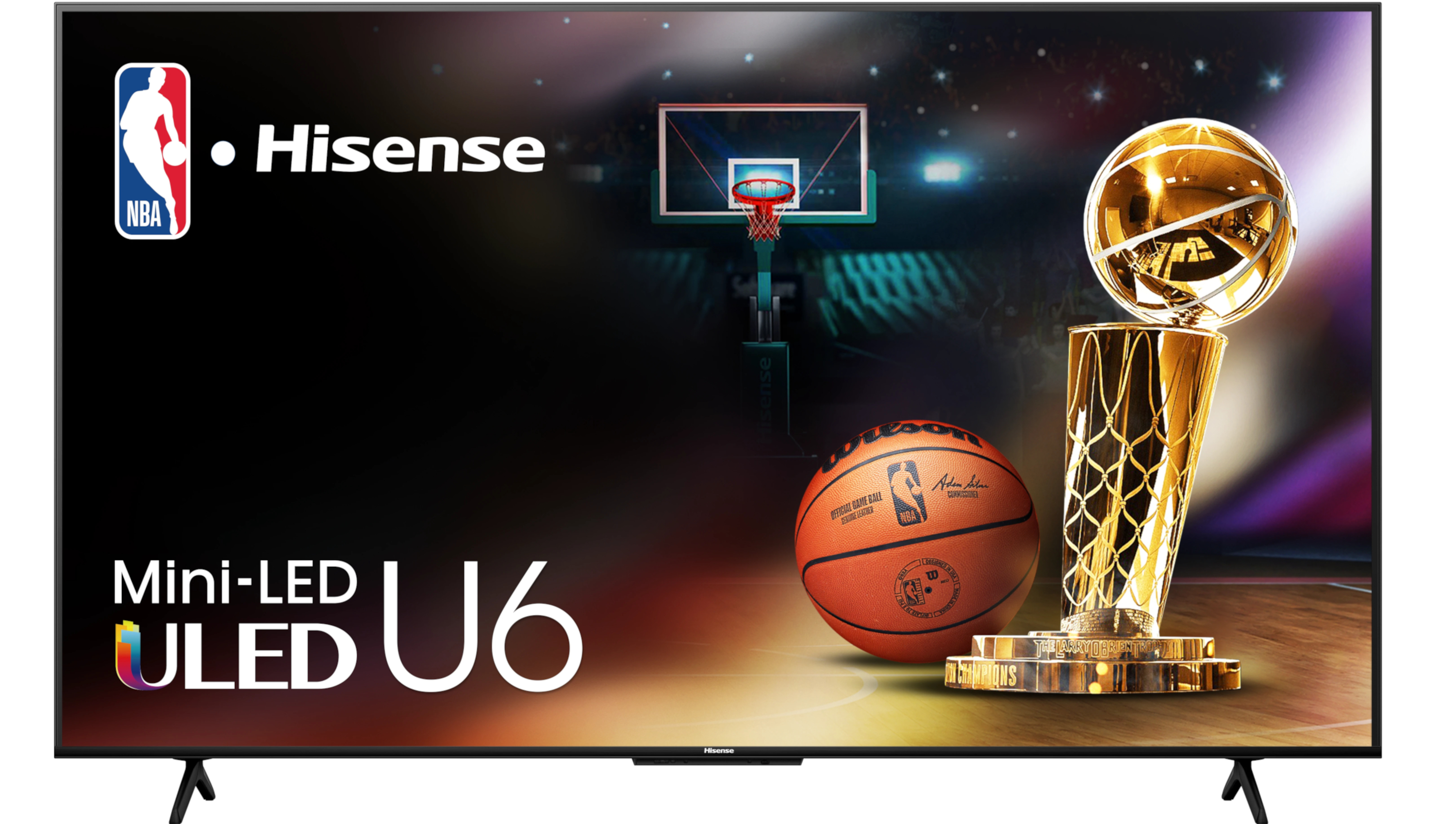
The Hisense U6N is the most affordable Mini-LED TV on the market, but its lack of gaming features puts it at a disadvantage compared to the TCL QM6K.
Pros
- Loaded with smart features
- Dolby Vision and HDR10+ support
- Impressive picture quality for the price
Cons
- No HMDI 2.1 ports
- Disappointing sound quality
Mini-LED TVs are finally starting to proliferate at affordable price points, thanks in large part to TCL and Hisense, two brands that are leading the charge when it comes to cutting costs.
Two of their most recent entries in the budget-friendly Mini-LED class are the TCL QM6K and the Hisense U6N. They share a lot in common on top of their display hardware, including built-in Google TV and a handful of nifty gaming features. Given their similarities, choosing between them might be overwhelming.
That’s where I come in. I’ve been testing and reviewing TVs for over a decade. I’m deeply familiar with both of these entry-level Mini-LED TVs, and I’m here to break down their key differences. Here’s what you need to know.
TCL QM6K vs Hisense U6N: Specs compared
| Header Cell - Column 0 | TCL QM6K | Hisense U6N |
|---|---|---|
Sizes | 55", 65", 75", 85", 98" | 55", 65", 75", 85" |
Ports | 2x HDMI 2.1, 2x HDMI 2.0 | 4x HDMI 2.0 |
Resolution | 3,840 x 2,160p | 3,840 x 2,160p |
Refresh rate | 144Hz | 60Hz |
HDR | Dolby Vision, HDR10+, HDR10, HLG | Dolby Vision, HDR10+, HDR10, HLG |
Smart TV software | Google TV | Google TV |
ATSC 3.0 support? | No | No |
Processor | AIPQ PRO Processor | Hi-View Engine 4K |
From a specs standpoint, there are some similarities like HDR support and lack of an ATSC 3.0 tuner, but they differ in some pretty significant ways.
What's similar is that you're getting both HDR10+ and Dolby Vision support on both of these TVs, which is great news for A/V enthusiasts who want to tap into the most popular HDR formats available across 4K Blu-rays and streaming platforms.
However, the QM6K comes with an impressive 144Hz native refresh rate, which is almost unheard of at this price point. In addition, two of the QM6K's HDMI inputs are HDMI 2.1-compatible.
With the higher refresh rate and HDMI 2.1 compatibility, the QM6K supports 4K gaming at 120Hz (for console gamers) and 4K gaming at 144Hz (for folks who want to link their TV up to a gaming PC). The U6N only supports 4K gaming up to 60Hz — a pretty significant limitation for gamers.
Get instant access to breaking news, the hottest reviews, great deals and helpful tips.
TCL QM6K vs Hisense U6N: Design
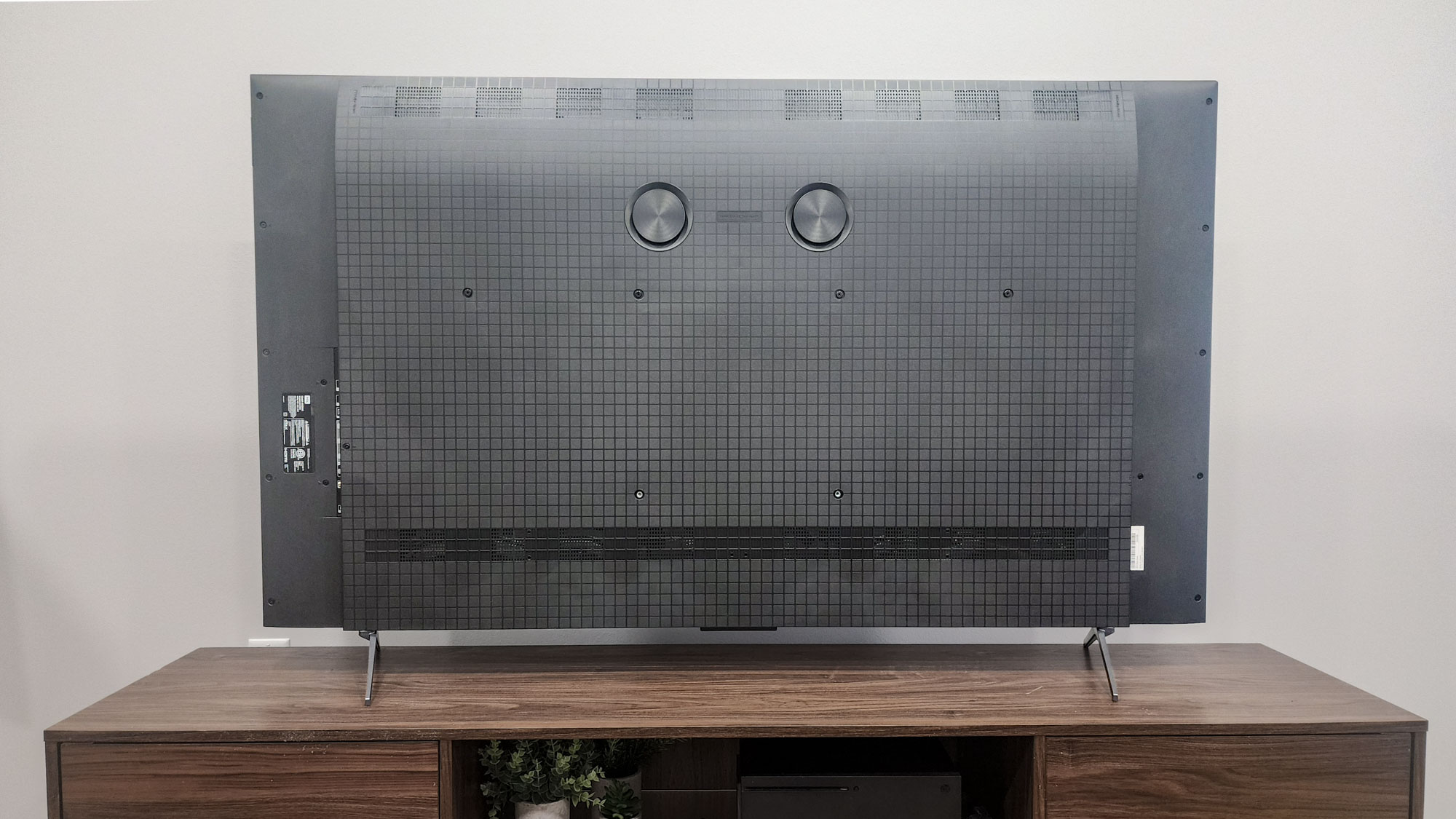
The similarities continue to stack up when comparing each TV's physical design. Both models rely on a pair of wide-set, boomerang-shaped feet to prop up their panels, and both are chunkier than fancier, higher-priced TVs.
In order to make space for its internal hardware, the QM6K (pictured above) bulges out across most of the backside of its panel. The U6N, on the other hand, widens out across the midsection of the panel which, if you ask me, leaves it looking less sleek than the QM6K.
I also prefer the QM6K's narrower, silver-toned feet over the U6N's.
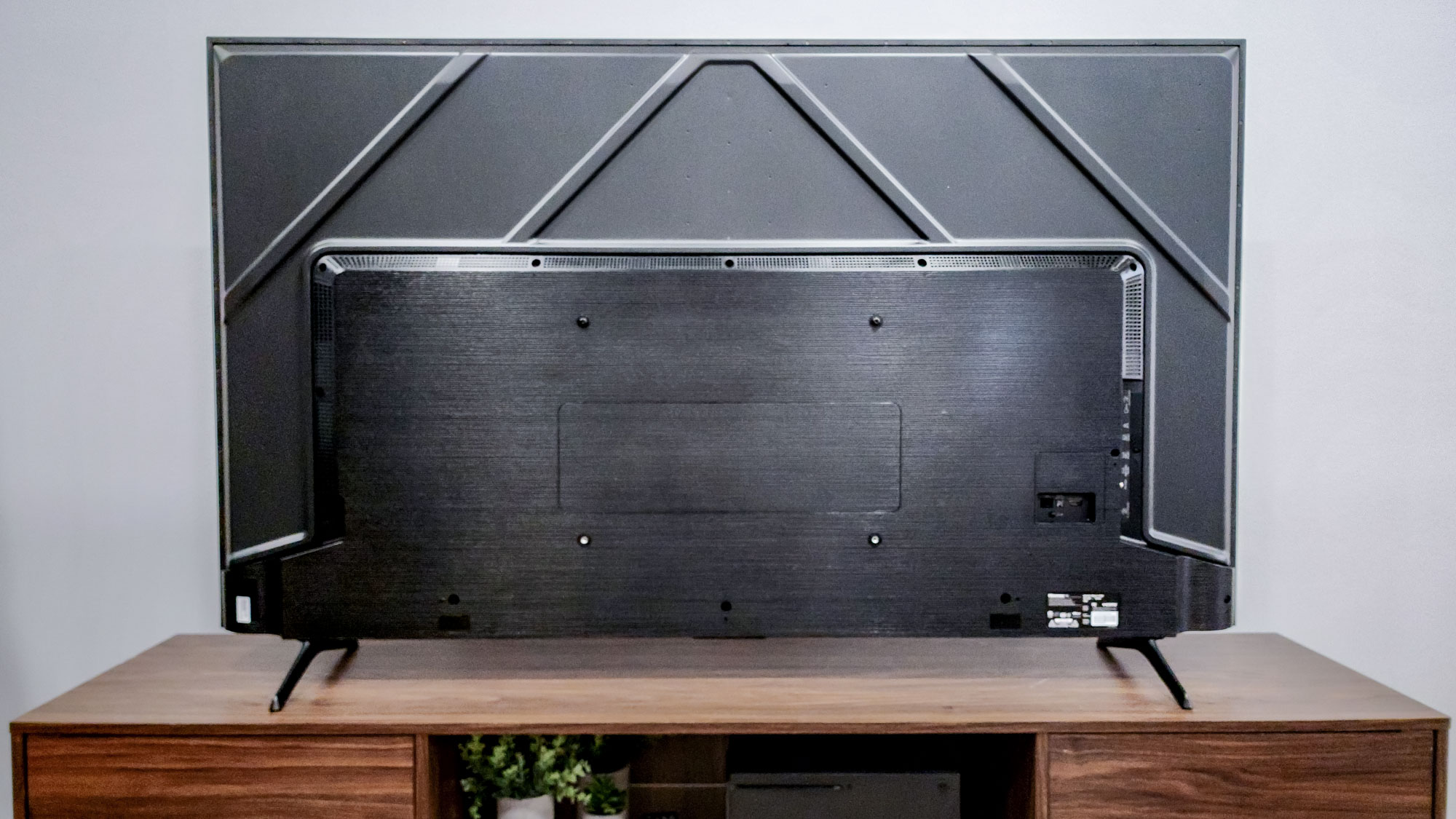
Here's some good news: Both the QM6K and the U6N arrive with a slim, backlit remote control. A clicker that illuminates itself when you pick it up might seem like a standard feature in this day and age, but it's not nearly as popular as it ought to be. It's nice to see both TCL and Hisense including this feature with entry-level sets.
You'll arrive at your own conclusions when it comes to which of these TVs is more aesthetically pleasing, but if you ask me, the QM6K is clearly a better-looking model.
Winner: TCL QM6K
TCL QM6K vs Hisense U6N: Performance
Before we dive into which of these TVs sports a prettier picture, let's take a look at how their test results stack up.
| Header Cell - Column 0 | TCL QM6K | Hisense U6N |
|---|---|---|
SDR Brightness (10%, in nits) | 688 | 607 |
Delta-E (lower is better) | 1.0 | 1.7 |
HDR Brightness (10%, in nits) | 695 | 615 |
UHDA-P3 Gamut Coverage | 94.71% | 93.04% |
Rec. 2020 Gamut Coverage | 71.23% | 75.10% |
Input latency (milliseconds) | 13.1 | 9.3 |
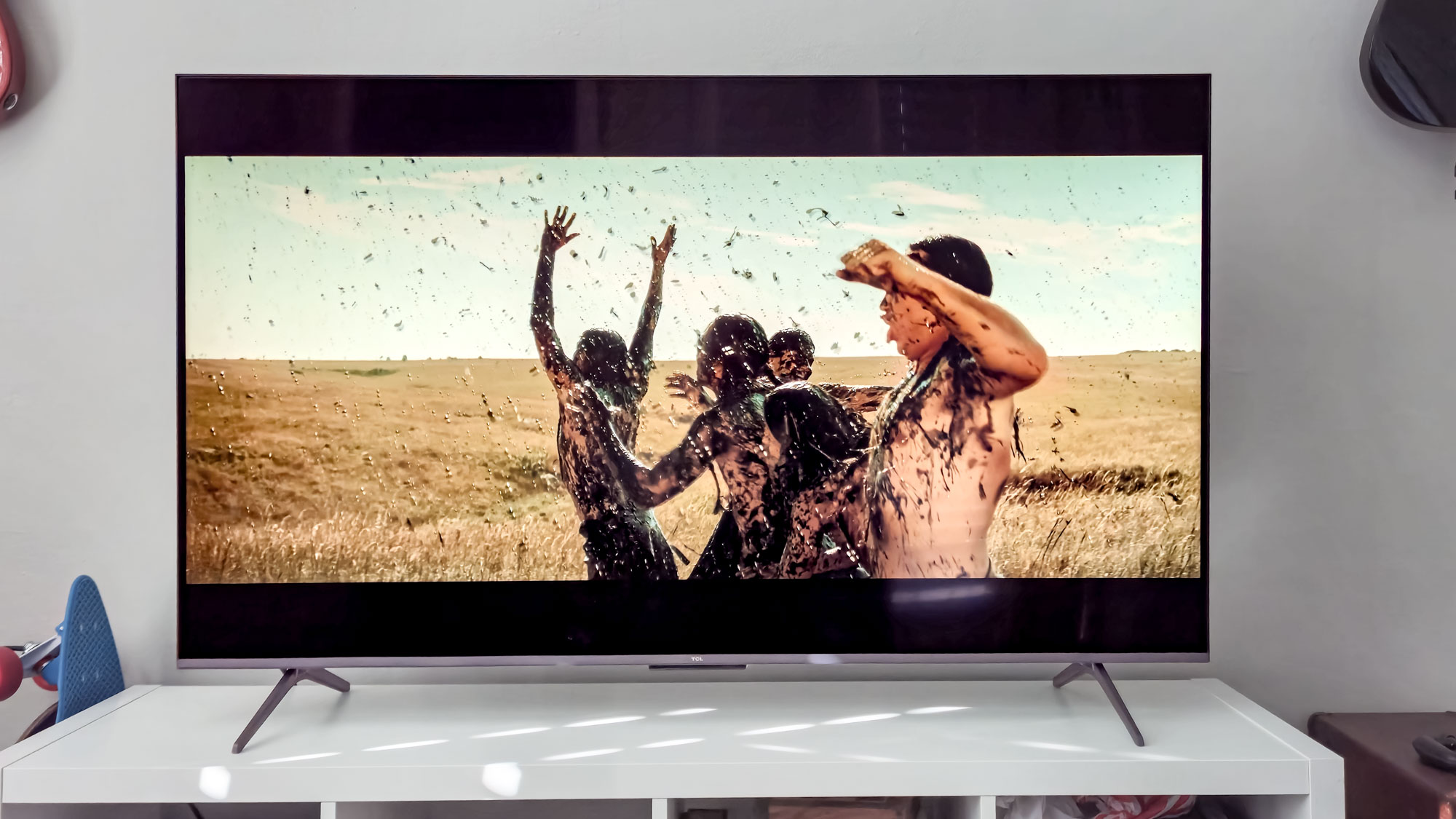
One glance at the test results and it’s clear just how similar these two TVs are when it comes to performance.
They each offer roughly the same amount of brightness in both SDR and HDR, but the QM6K has a bit of an edge, particularly when it comes to HDR highlights. In real-world terms, there’s a good chance you wouldn’t notice a difference between the two unless it was a side-by-side comparison.
The same can be said for color volume, too. These TVs do an impressive job with saturating color given their low prices — just don’t expect to be blown away by bold, bright HDR hues. And, when it comes to out-of-the-box accuracy, picture purists will be pleased to learn that the QM6K and U6N are finely tuned in their respective Filmmaker modes.
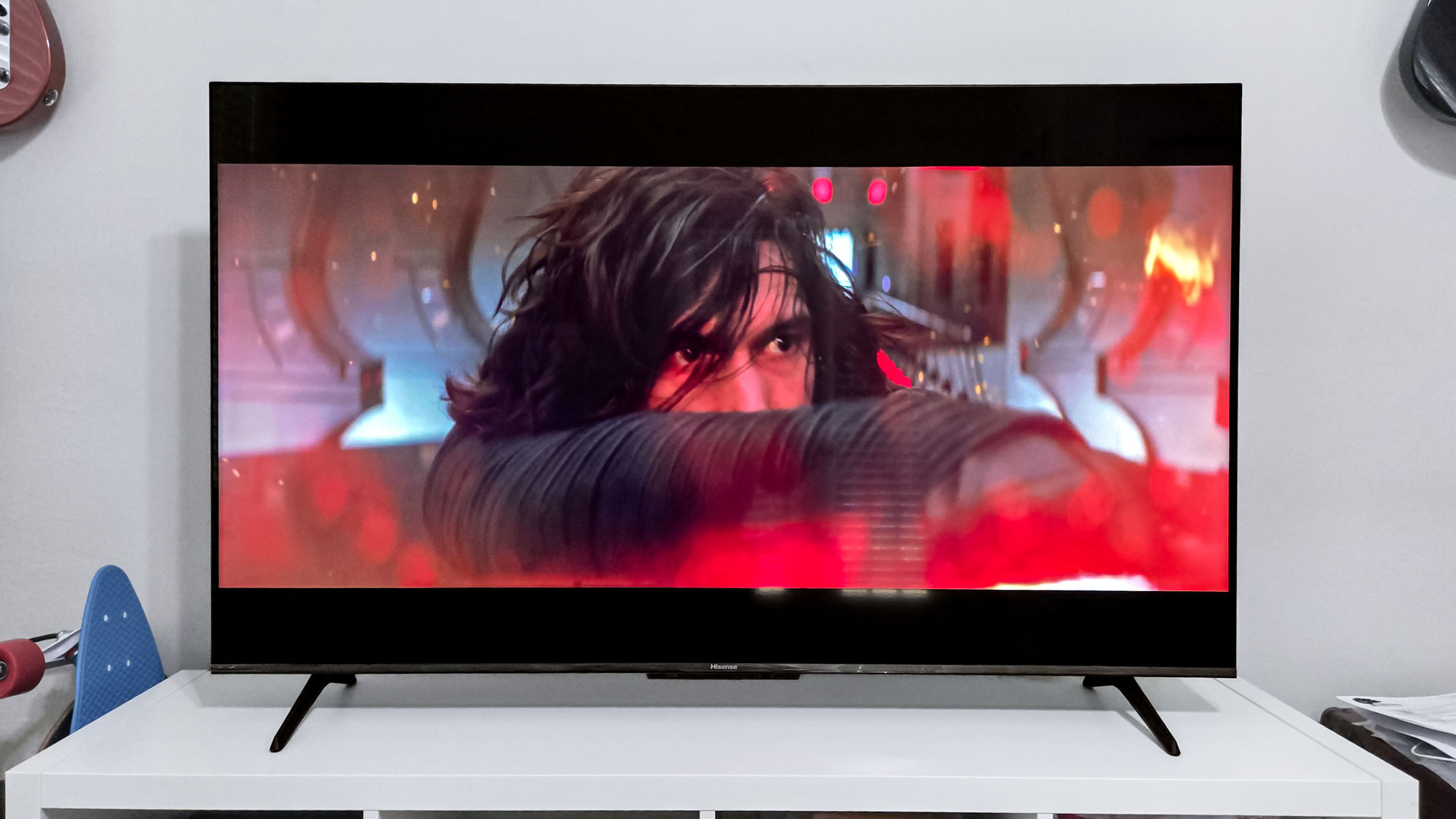
These competing models offer better backlight control than most TVs in their price range.
The aspect of these TVs that ultimately has the biggest impact on their performance are their Mini-LEDs. If you’re going to save money on a budget-friendly TV, these competing models offer better backlight control than most TVs in their price range. In short, they're both excellent choices for the cost.
In recent years, I’ve found myself more impressed by TCL’s picture processing than I have with Hisense’s picture processing, but if you don’t consider yourself an eagle-eyed enthusiast of TV tech, I wouldn’t worry too much about the distinction. Both TVs upscale sub-4K content relatively well, and motion handling is mostly fine, too.
Winner: Draw
TCL QM6K vs Hisense U6N: Smart platform and features
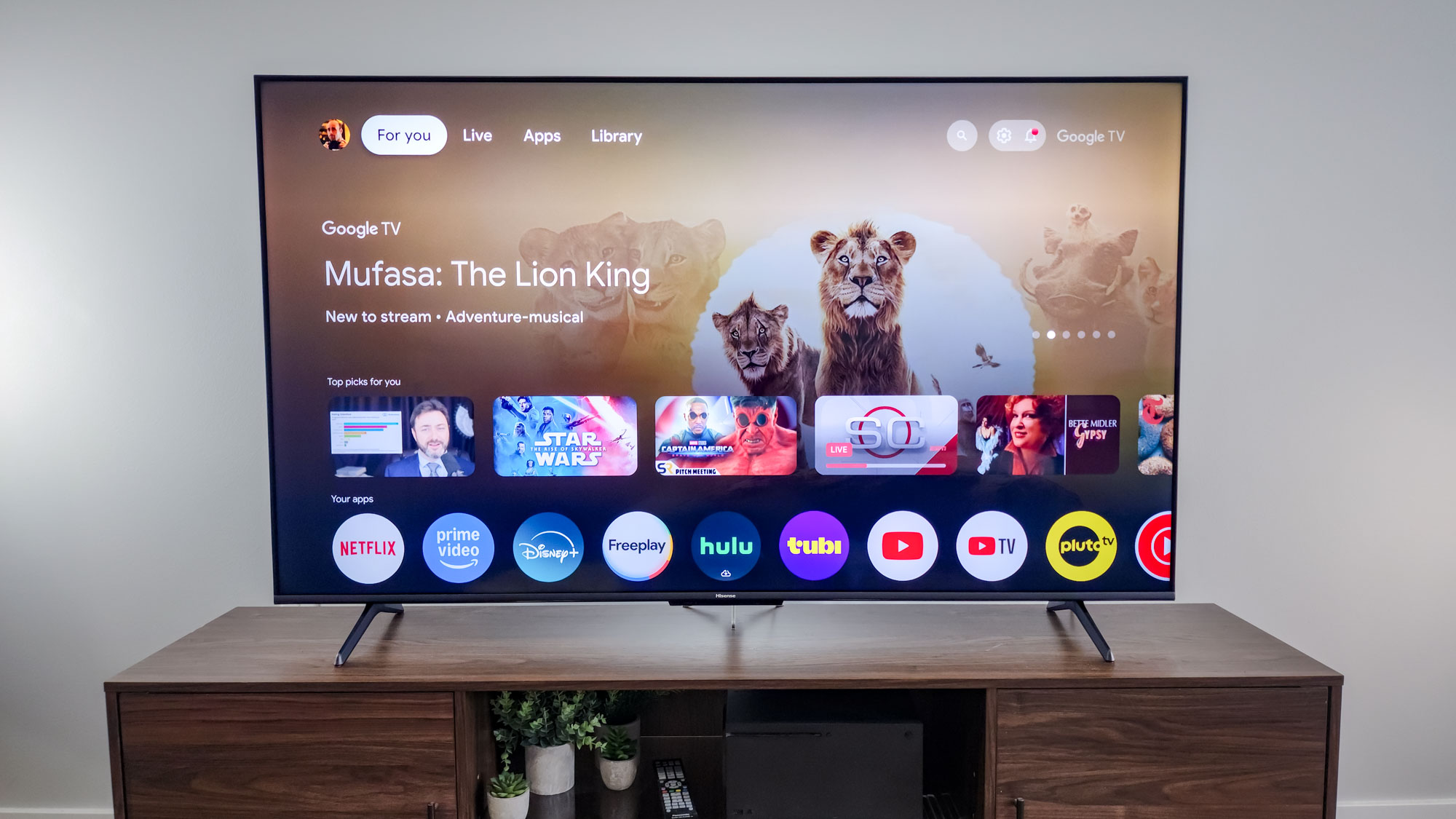
As mentioned, both of these TVs come with Google TV baked right in. Your mileage may vary, obviously, but I quite like the Google TV operating system.
Yes, you’ll have plenty of sponsored and recommended content to contend with across the home screen, but this is the case with just about every smart platform that isn’t called “Roku.” Additionally, I find the navigation experience to be snappy and simple.
Dolby Vision support is certainly appreciated, too, as it allows these TVs to make the most out of the most prolific HDR format. They also come with HDR10+ support to round things out.
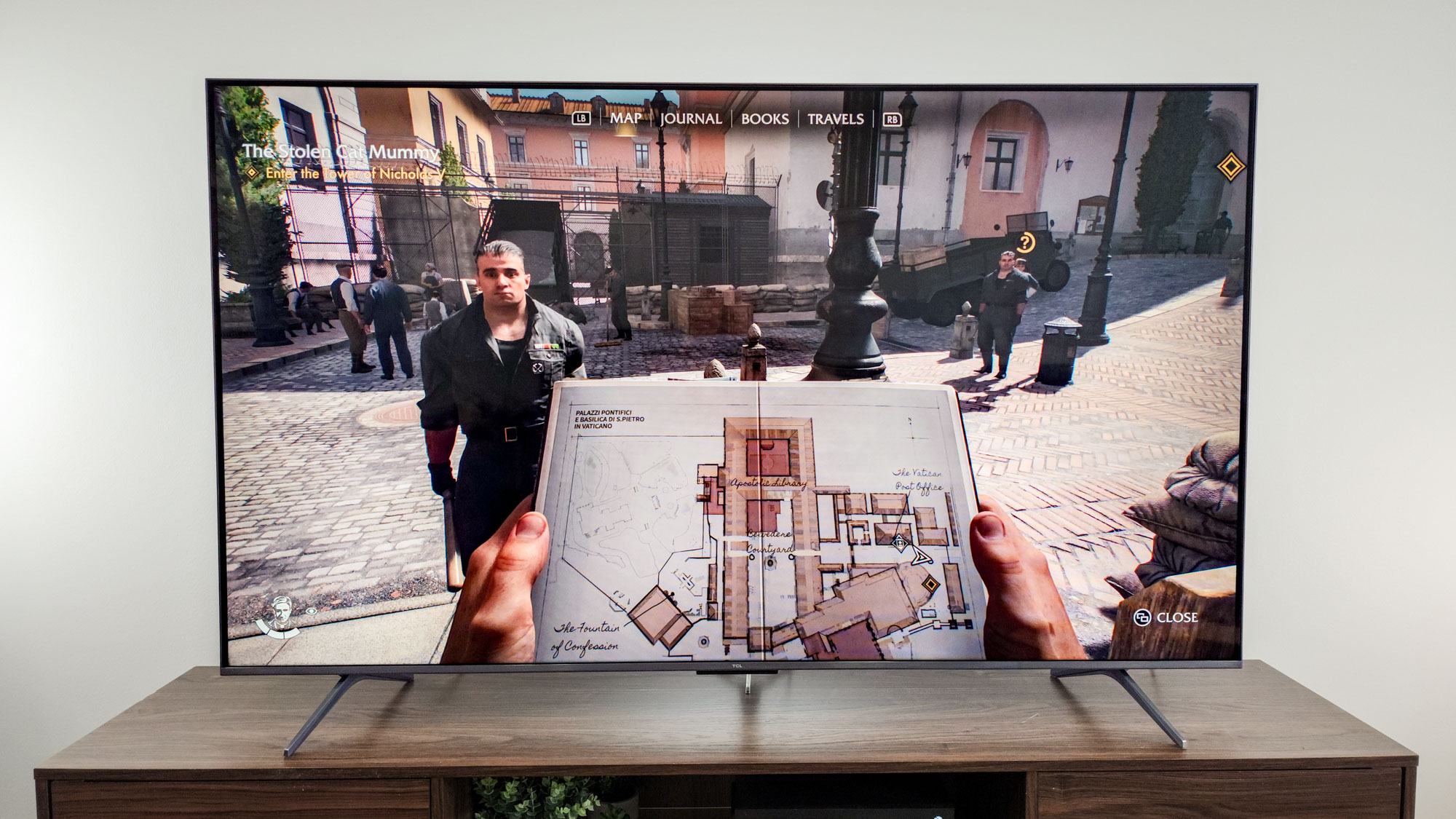
On the gaming side of things, it's a whole different story. As I mentioned above, the QM6K is the only one of these two that supports 4K gaming at 120Hz and 144Hz. It's capable of taking full advantage of Xbox Series X and PlayStation 5 Pro — at least when it comes to framerate at 4K resolution.
It's tough to overstate how important this is for dedicated gamers. The QM6K is much better suited for gaming, and it will obviously remain that way for years to come.
Each TV also comes with Variable Refresh Rate (VRR) and Auto Low Latency Mode (ALLM), but given that the U6N is locked in at 4K/60Hz, the addition of these features feels like a consolation prize for Hisense U6N owners.
Winner: TCL QM6K
TCL QM6K vs Hisense U6N: Outlook
| Header Cell - Column 0 | TCL QM6K | Hisense U6N |
|---|---|---|
Specs (25) | 20 | 15 |
Design (25) | 18 | 16 |
Performance (25) | 20 | 19 |
Features (25) | 21 | 16 |
Total Score (100) | 79 | 66 |
Both of these sets carry an MSRP of $799 for a 55-inch model, but you're far more likely to find them on sale right now.
Depending on where you look, the TCL QM6K starts at around $598 for a 55-inch model, and is typically $100 to $200 more than the U6N.
That said, one wrinkle to keep in mind is that the 55-inch U6N is getting tougher to find. At the time of publishing, the 65-inch Hisense U6N is just $499 at Best Buy, but 55-inch models are only available used.
Unless you're trying to save as much money as possible, I would recommend splurging on the QM6K. And, if you're a gamer, I think the decision is even more of an open-and-shut case.
Each of these TVs is a fantastic entry-level pick on the basis of their Mini-LEDs alone, but only the QM6K delivers robust gaming support.
More from Tom's Guide

Michael Desjardin is a Senior Editor for TVs at Tom's Guide. He's been testing and tinkering with TVs professionally for over a decade, previously for Reviewed and USA Today. Michael graduated from Emerson College where he studied media production and screenwriting. He loves cooking, zoning out to ambient music, and getting way too invested in the Red Sox. He considers himself living proof that TV doesn't necessarily rot your brain.
You must confirm your public display name before commenting
Please logout and then login again, you will then be prompted to enter your display name.
